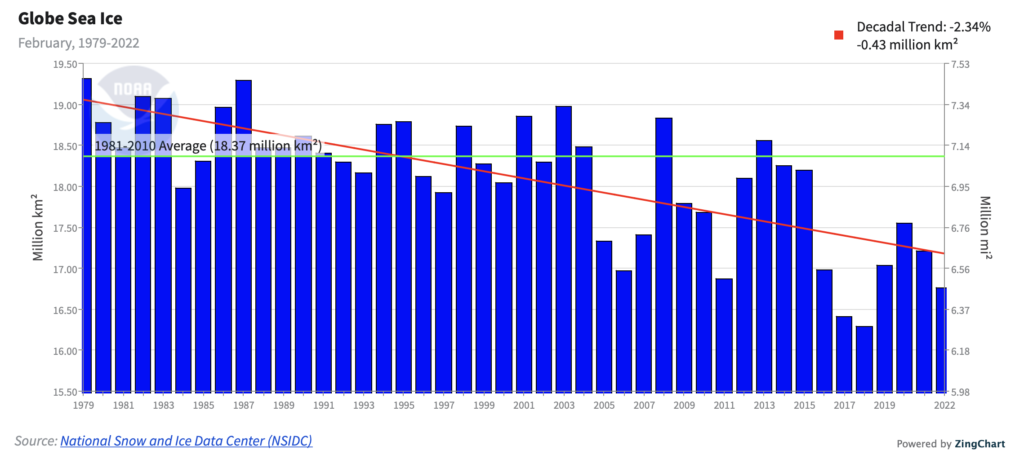While many other things dominated the headlines from the Russian/Ukrainian conflict to inflation and policy response to COVID-19 Omicron part deux, something that was considered mostly unthinkable by scientists happened in Antarctica. According to the US National Ice Center (https://usicecenter.gov/PressRelease/IcebergC38): “(USNIC) has confirmed that iceberg C-38… has calved from the Conger Ice Shelf in the Wilkes Land Region of Antarctica. As of March 17, C-38 was centered at 65° 40′ South and 102° 46′ East and measured 16 nautical miles on its longest axis and 10 nautical miles on its widest axis. C-38 comprised virtually all that remained of the Conger ice shelf, which was adjacent to the Glenzer Ice Shelf which calved last week as iceberg C-37.” Eyes had been on another part of Antarctica over concerns about the potential collapse of the so-called “Doomsday glacier” — Thwaite’s glacier. But, Conger beat Thwaite to the punch with a break-away described as nearly the size of Los Angeles. Our attached chart from NOAA NCEI chronicles the decline in global sea ice just since 1979. When split into hemispheres, Northern loss is faster at -2.68% vs. “only” -0.33% for Southern (decadal trend). The fact Conger collapsed and Thwaite’s is trying is deeply concerning because it illustrates just how fragile the system is. Failure to adjust climate-changing activities and to start building resiliency and adaptation into industries and communities poses real threats to economic stability and prosperity and the performance of investments over a shorter-term horizon than many expect.

